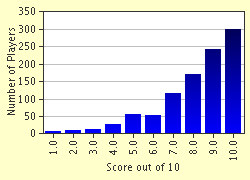Quiz Answer Key and Fun Facts
1. This sterling example of man's inhumanity to man was instituted by monarchs Ferdinand and Isabella in 1478, in order to control Catholicism in their country. Systems were put into place that encouraged people to denounce their friends and neighbours, who would then be imprisoned (with their fortunes held forfeit) and eventually tried for heresy. Torture was frequently used to secure confessions, and death was often the sentence, sometimes by being burned at the stake. What name was commonly assigned to this period?
2. My trusty Penguin dictionary defines this word as; "an organized massacre of people from a particular ethnic group". It further states "especially of Jews in eastern Europe and Russia". The act associated with the word was one seen all too frequently in 19th century and early 20th century Russia. What is this word?
3. This American group was first established in 1866, after the Civil War. Many historians feel that the original intent was to resist the reconstruction of the South as much as possible and to stop the education of the freed slaves. The leadership of the organization, such as it was, deplored the use of violence as much as the government did, and it was effectively destroyed by Ulysses S. Grant in 1870. A rebirth of the group occurred in 1915, and it was this incarnation that preached racism and white supremacy, and became known for lynchings and cross burnings. What is the name of this organization?
4. During the Second World War, the Nazi Regime systematically murdered an estimated six million European Jews. Although the genocide of the Jewish people was undoubtedly their primary goal, they also targeted other 'undesirables', like homosexuals, the physically and mentally challenged, and Jehovah's Witnesses. All told, estimates of the number of people murdered by the Nazis range from nine to twenty-six million. Much of the world has since come to refer to this horror as the Holocaust, but the Nazis had a different name for it. What did they refer to it as?
5. Often referred to as the 'Butcher of Uganda', this barely literate despot had a successful military career before seizing power of his country in a military coup. The people of Uganda initially accepted him as an improvement over the president whom he had deposed (Obote), but they soon learned that they had jumped from the frying pan into the fire when he began executing everyone whom he did not trust or who had not supported his coup. What was his name?
6. In 1975 a group of communist guerillas, known as the Khmer Rouge, invaded the capital city of Phnom Penh. In the four years that they held power, they committed all sorts of atrocities, including the wiping out of approximately 30% of the population of this country, which amounted to an estimated two million people. Areas where many of these people were killed and buried became known as the Killing Fields - another 20th century expression that has worked its way into our vocabulary. In what country were these atrocities committed?
7. In 1989 the government of the People's Republic of China used force to suppress the protests of the crowd that was comprised largely of students, labour activists and a segment of the population referred to as intellectuals. Where did this event occur?
8. Which country, after seeking independence from the former Yugoslavia, brought the expression 'ethnic cleansing' into common usage?
9. In the spring and early summer of 1994, two radical militia groups of Hutus (the Interahamwe and Impuzamugambi) attempted to wipe all Tutsis off of the face of the Earth. They succeeded in slaughtering anywhere from 800,000 to one million souls of Tutsi ethnicity, as well as many moderate Hutus. In what country did this act of genocide occur?
10. This 20th century dictator began his rule by executing anyone who had opposed him. Deposed in 2003, this charmer was charged with Crimes Against Humanity for his many infractions, most notably the attempted genocide of some of his own people of Kurdish ethnicity. Who is this charming dictator?
Source: Author
skunkee
This quiz was reviewed by FunTrivia editor
bloomsby before going online.
Any errors found in FunTrivia content are routinely corrected through our feedback system.

